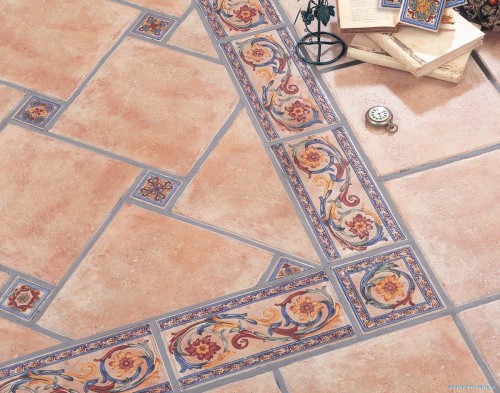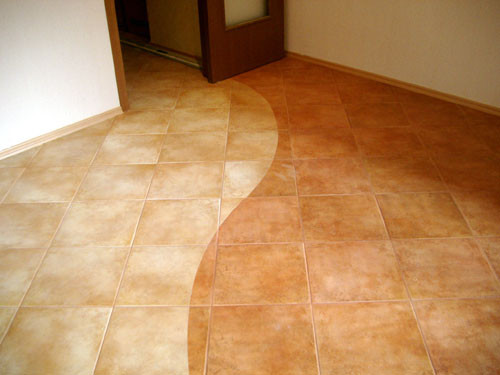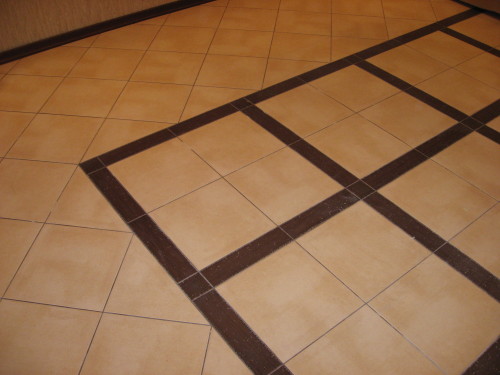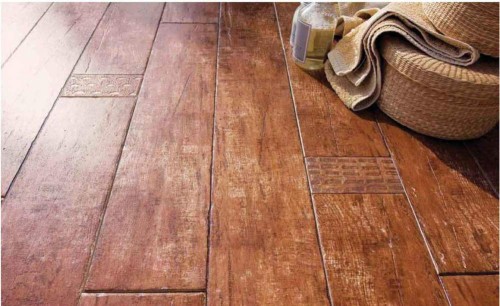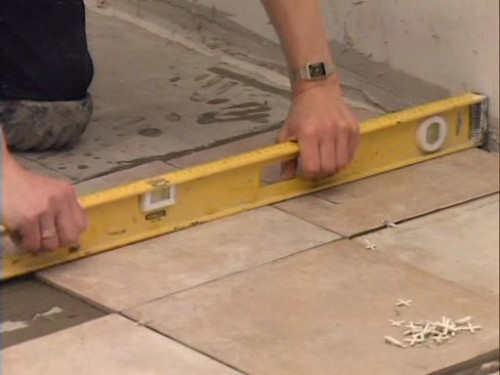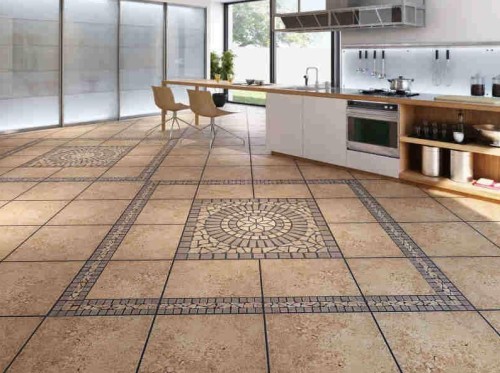
Ceramic tile for the floor: Tips for choosing and laying Floors
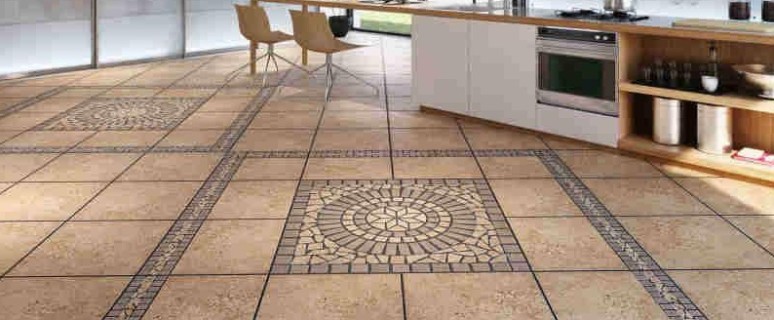
Ceramic tile is one of the most popular materials for finishing floors. Beautiful design, reliability and long service life has become the key to the popularity of this finishing material. Contrary to the problem that ceramic floors are applied in the kitchens and in the bathrooms, this material is successfully applied in other rooms. Tile can highlight a common designer idea and become a link to the interior to become one. On how to choose the right ceramic flooring and install it - more.
Content
Advantages and disadvantages of ceramic tiles
Like any material that is used in the decoration decoration, the ceramic tile has both their advantages and disadvantages. When choosing an outdoor coating, you need to know all of them to choose the most suitable for a particular room.
Among the advantages of ceramic floor can be noted:
- Durability. Properly laid ceramic tile can serve more than half a century, while maintaining its original appearance.
- "Indifference" to change temperature and humidity. Unlike wood-based coatings and, even linoleum, ceramic tile does not respond to change in temperature and humidity. It will not swell from the "Flood" as a laminate and will not take mold, like some types of linoleum. That is why for floors in the bathrooms and kitchens mainly choose ceramic tiles.
- Fire resistance. Tile - the only one of flooring that does not burn, that is a major factor in domestic furnishing.
- Wide range of sizes. Floor tiles produces a wide range of different sizes, which will enable to choose the most suitable for each particular room.
- Environmentally friendly. For several centuries the technology of production of ceramic tiles has not changed much. Its composition is mainly used in the clay, which is an environmentally friendly material.
- Design appeal. Ceramic - one of the favorite designers of materials. Thanks to a wide palette of colors, textures and images, using this material, you can create any interior.
- Price. Tiles, like most flooring, has a wide range of prices: from budget options for domestic manufacturers, to exclusive offers, the value of which is quite high. That's why everyone has the opportunity to choose for their prosperity.
However, it should be noted that the ceramic floor covering is not without drawbacks:
- Demands to the ground. For laying ceramic tile floor must be completely flat and dry. Otherwise, after a short period of time after installation cracks may appear on it.
- The lack of sound insulation. This defect must be eliminated at the stage of preparing the substrate by means of stacking an additional coating of polystyrene.
- Slippery surface. Glossy tiles quite slippery, especially if it is wet. Therefore, if a family has young children or the elderly, it is best to choose the least traumatic model with a rough surface.
- Cold. Pottery - a very good conductor of heat, which is why in the winter from it "blows cold." This problem is solved by installing a "warm floor" system.
Marking ceramic tiles for flooring and its dimensions
Making a choice in favor of one or another material, it is necessary to pay attention not only on the appearance of the tiles, but also on its labeling. Like any other material, each model has a specific designation, which you can find its physical and performance properties.
On the packaging with the tiles in most cases cause the following values:
- Wear resistance class (PEI). Value ranges from 1 to 5. The higher the grade of wear resistance, the coating will withstand a greater load.
- Moisture resistance. It is indicated in%.
- Resistance to the effects of chemical elements. The letter notation from D (the lowest) to AA (the highest) are used.
- Production technology. To press the designation - B, for extrusion - A.
- Hardness - from 3 to 9 units. The indicator above, the harder coverage.
Depending on the color, which causes the labeling, determine the grade tiles:
- Marking for products of the 1st grade is applied red, no more than 5% of the defective products are allowed in the batch of such tiles.
- Blue is indicated by a gentle tile. No more than 10% of marriage is allowed in its batch.
- In the parties of a third-edge tile, which are indicated by marking a green color, a marriage share can reach 25%.
The most suitable ceramic tile for the kitchen on the floor will become: a class of wear resistance 3, moisture resistance of at least 3%, with a friction coefficient up to 0.75%. Quality class is better to choose the greatest. In this case, the coating will not have a large number of defects. When choosing the characteristics of the tile, it is necessary to take into account that the price of the coating increases with their improvement and the range is reduced. The greatest choice of colors and drawings is observed in the average price segment.
Tile sizes range from the smallest 10x10 cm to large 60x100 and 70x120 cm. The most optimal size is a rectangle 20x30 cm or a square 50x50 cm. Most often, the tile has a square or a rectangle form with the aspect ratio of 1: 3 or 1: 2, however, meet Other models, such as "parquet", in which the material has a parquet board. The thickness of the ceramic tile for the floor is mostly the same.
Selection of tiles in the interior of the room
To date, there is a large amount of tiles on sale, which is different, both in size and color, texture, drawing. The choice of the most suitable option for laying is not quite simple. Here you need to pay attention to the overall stylist of the room: the color of the walls, the tone of the furniture, drawing of wallpaper or plaster. For premises with high humidity, it is better to choose a tile with a rough surface. However, and here you need to know the measure. Dirt and fat can accumulate on a rough surface, which will lead to its contamination.
Speaking about tone tones, it is necessary to take into account the area of \u200b\u200bthe room. So for the premises of a small area, light colors will be the best option, and vice versa. Usually the most popular tile of monochrome calm tones, such as light beige, light gray, etc.
To achieve contrast, the tile is selected depending on the color of the furniture. If it is light, then the tile is preferable to dark color and vice versa.
To create a rustic interior, the floor can be decorated with tiled and imitation of natural stone. In order to avoid monotonment, the center of the room can be separated by a small tiled with a variety of ornaments.
When choosing a tile option, you need to take into account the orientation of the windows of the room. So for the northern side, the most suitable option will be warm tones, and for south - on the contrary, colder and saturated.
For a large room, a square tile laid in rhombic will be the perfect option. If you need to visually lengthen or expand the room, rectangular models will come to the rescue. Always relevant ornaments remain with black inserts on a white background, which create the impression of styling in the corners of the black tile.
Laying ceramic tiles on the floor
Staying the coating of ceramic tiles is not too complex occupation, however, requiring certain accuracy and care. Begin to lay a tile from the center of the room. It is he who immediately rushes into the eye at the entrance to the room. The center of the room can be determined by connecting the centers of opposite walls. At the intersection of these lines that can be bought with a pencil, and there will be a center. If it is necessary, it can be shifted in such a way that there are no circumfised pieces of tiles near the walls on the visible sites. Some experts begin laying tiles from the angle, however, this requires certain skills.
Before you start laying, you need to check the flattering floor. The permissible deviation from the level is 5 mm by 2 meters of the floor. It is such unevenness that can be aligned with tiles and glue. Otherwise, the floor is leveled with special mixtures. The laying can be carried out only when the leveling mixture is completely dry. To ensure good adhesion of solution and coating, it is treated with primer. Before laying the tile, the lined floor is again ground.
Ceramic tiles for the floor can not cut with glass cutting, for this use mechanical or electrical tiles.
For laying tiles, a special adhesive mixture is used. It is sold in a dry form and for the preparation of glue is simply divorced by water and is stirred using a mixer. The proportions of the addition of water must be kept strictly according to the instructions, otherwise the adhesive will be too thick or too liquid. After dilution, the solution should stand a little (approximately 5-10 minutes). You should not knead a large amount of glue, because it will dry pretty quickly. After drying it, you can only throw it away.
For the device of floors from ceramic tile, the glue is applied both on it and on the surface of the floor. Do it with the help of a toothed spatula. Not more than 1 m are applied to the floor 2 glue. When applied with a solution, it is necessary to trace the furrows on the floor and on the tile intersect. The seam between the tiles is stacked with special tile remote crossing. After drying the glue (about 2-3 days), the intercutric seams are wiping with a special molding solution. After that, the seams are slightly wetted with water in the next 2-3 days, so that they type strength, otherwise they can crack.




